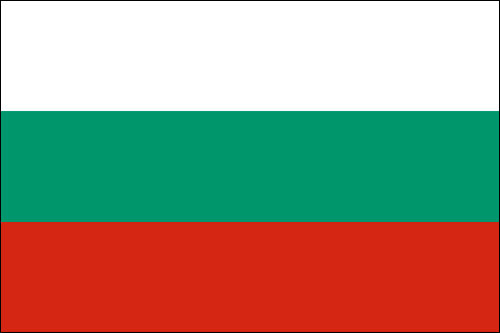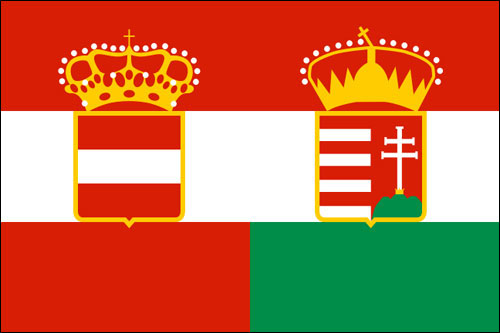From late September 1918 it was increasingly clear that the end of the First World War was near. As the Allies continued to advance against German forces on the Western Front and the other Central Powers began to surrender, New Zealanders began to celebrate.
Bulgaria’s surrender
Bulgaria surrendered first. It signed an armistice with the Allies on 29 September 1918, following an offensive against it earlier in the month. News of its capitulation spread throughout New Zealand on the morning of Tuesday 1 October. People hoisted flags and bunting on buildings and ships, set off sirens, rang bells, blew whistles and cheered. They gathered in town centres to sing and play patriotic songs and hear speeches about the importance of the day. Speakers explained the significance of Bulgaria’s exit from the war - with its overland communications with Germany now cut, the Ottoman Empire would soon have to surrender.
Armistice agreements
Armistice of Thessalonica, signed 29 September 1918, between the Kingdom of Bulgaria and the Allied Powers
Armistice of Mudros, signed 30 October 1918, between the Ottoman Empire and the Allied Powers
Armistice of Villa Giusti, signed 3 November 1918, between Italy and Austria-Hungary
Armistice of Compiegne, signed 11 November 1918, between Germany and the Allied Powers
Headmasters organised assemblies at which children listened to speeches before enjoying the half-holiday requested by the Minister of Education. The Minister also granted them a holiday for the following Monday to celebrate the Allies’ recent victories. Some commented that this was the first time New Zealand schools had closed to mark a victory, while Germany had granted school holidays for many victories, ‘real or faked’.
The authorities in some areas encouraged citizens to take a half-holiday that afternoon or the following day. Others seem to have restricted themselves to the ceremonies recommended by acting Prime Minister Sir James Allen: flag-raising and thanksgiving services.
Amidst these celebrations, the machinery of war kept grinding on. The second portion of the 43rd Reinforcements left the country for service overseas on 2 October, and the 47th Reinforcements went into camp. Among the latter were the first ‘Class C’ reservists - married men with two children. Speaking at a farewell event, the Mayor of Motueka commented that while he hoped they would not be required, ‘he would be prepared to send men with three, four, five, aye, six children … to prevent German predominance’. Both these groups avoided action overseas but were caught up in the second wave of the 1918 influenza pandemic, news of which arrived around the time of their departure.
Turkey's surrender
On 30 October, a month after Bulgaria’s surrender, the Ottoman (Turkish) Empire signed an armistice with the Allies. The news reached the country early on the morning of 1 November, a Friday. This time the flags and bunting, bells and whistles, songs and speeches were even more enthusiastic. As speakers like Allen noted, Turkey’s surrender ‘meant very much more’ to New Zealanders because of their experience fighting the Ottoman Turks at Gallipoli and in the Near East.
This time - in addition to granting children a half-holiday - the government suggested that everyone take the afternoon off. All government offices closed in celebration and Parliament adjourned until Tuesday 5 November.
People again gathered in town centres in large numbers. Some communities followed spontaneous gatherings or processions with more organised ones later that day or the next. On Saturday, for example, Christchurch residents gathered in Cathedral Square for a public meeting held against a backdrop of a lorry carrying people in fancy dress and a dead turkey hanging by its feet from a crossbar. Many communities held services of thanksgiving that Sunday.
The arrival of the second wave of the influenza pandemic dampened Auckland’s celebrations of the Turkish surrender. The first New Zealand-based cases attributed to this wave of the pandemic had emerged in the city in mid-October. By the end of the month the pandemic had reached epidemic proportions locally. As a result the city’s mayor decided against calling for a public gathering to celebrate the surrender. Influenza was also rife in military training camps. By now second-wave cases at Narrow Neck camp on the North Shore had peaked, while Awapuni and Featherston camps had experienced their first such cases.
Austria's surrender
A few days after Turkey’s surrender, on 3 November, the Austro-Hungarian Empire signed an armistice with the Allies. The news arrived in New Zealand at around lunchtime next day, a Monday. The government again suggested that people take the afternoon off and instructed its offices to close. People again hoisted flags and bunting - if they had lowered them - and the usual cacophony of noises rang out. In Auckland the worsening epidemic continued to prevent public gatherings. Narrow Neck, Awapuni and Featherston camps were now all badly affected, and Trentham had experienced its first second-wave case.
Even where influenza had not reached epidemic proportions, news of Austria’s surrender excited less enthusiasm than Turkey’s. As the Otago Daily Times put it, news of Turkey’s surrender had been ‘dramatic’, whilst Austria-Hungary’s had been ‘hourly looked for’. The closeness of the two events tested the eloquence of many speakers. Proceedings at Parliament on 5 November had:
Scarcely as much snap as the jubilation over Turkey’s fall. It seemed as though the politicians had strained their ideas on that occasion and left themselves with but little new to say on the greater occasion of Austria-Hungary’s collapse.
Parliament adjourned for the day. The authorities elsewhere explained that they were holding back in anticipation of Germany’s surrender.






Community contributions